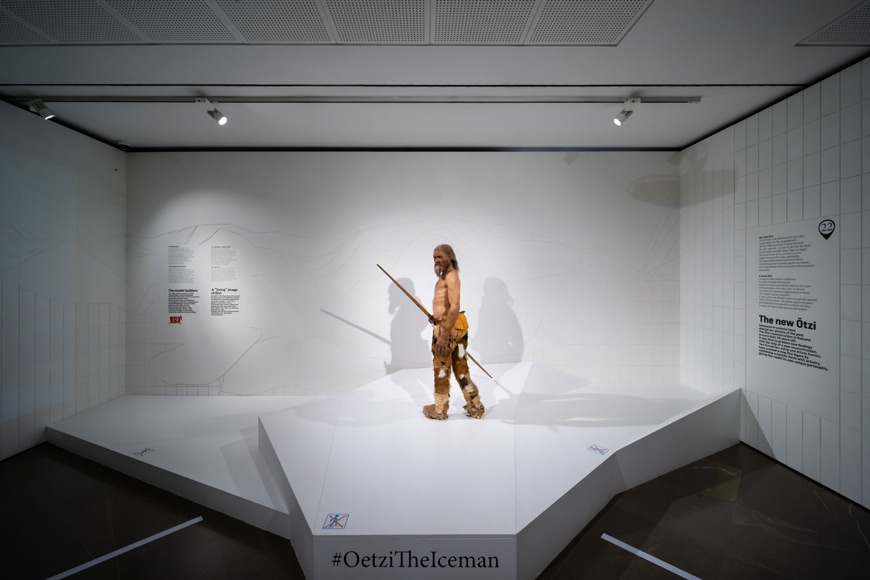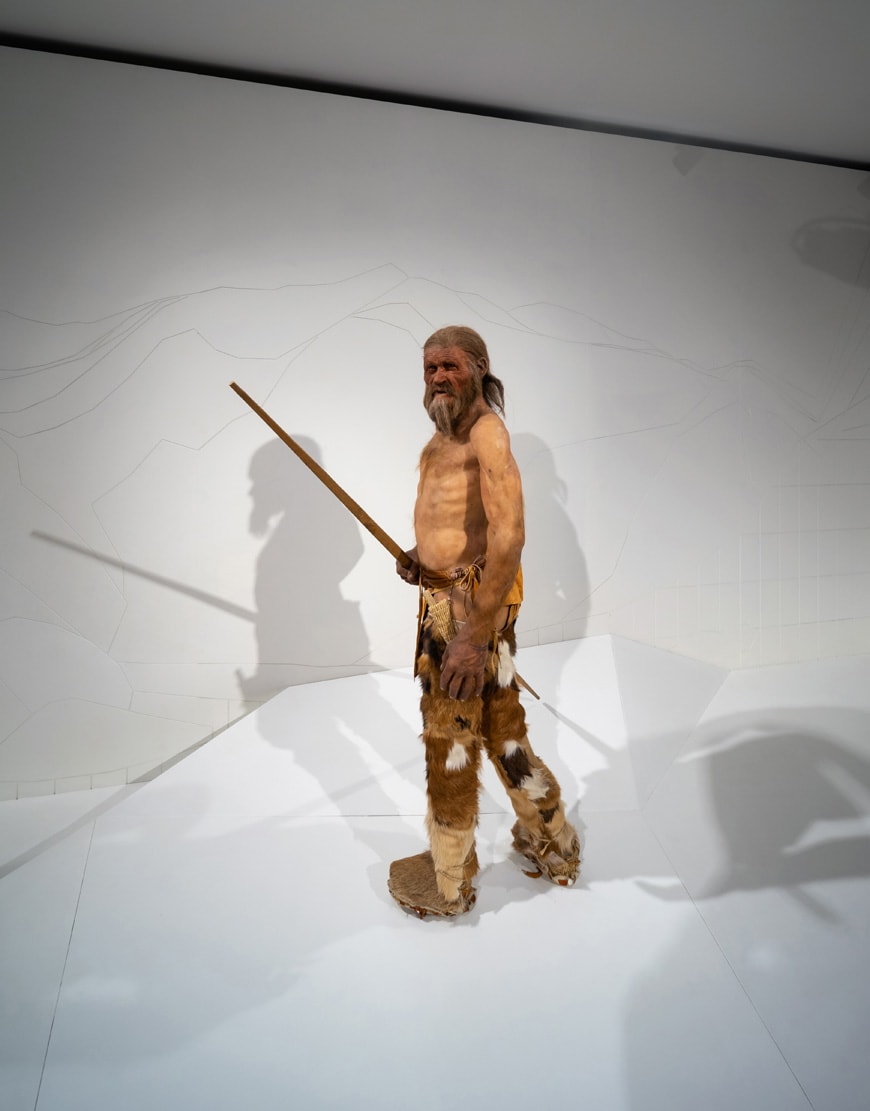Ötzi ‘The Iceman’ Mummy and the South Tyrol Museum of Archaeology
T.: +39 0471 320 100 email: info@iceman.it
http://www.iceman.it/en/
Open daily except Mondays, January 1, May 1, and December 25
The South Tyrol Museum of Archaeology is a museum in Bolzano/Bozen, South Tyrol, northern Italy, mostly known as the home of the Ötzi “the Iceman” prehistoric mummy.
Established in 1998 with the aim to present the Ötzi mummy to the public, the museum is located in the historic center of Bolzano, not far from Walther Square and the city’s Cathedral. The museum is housed in a 1913 Baroque revival building originally designed by architect Rudolf Eiser as the local branch of the Austro-Hungarian Bank.
On three levels, the permanent exhibition of the South Tyrol Museum of Archaeology is entirely dedicated to Ötzi and the historical context in which the Iceman lived, about 5,300 years ago.
Cover image: a reconstruction of the prehistoric man known as Ötzi “the Iceman” on display in the first-floor gallery of the South Tyrol Museum of Archaeology. Photo © Riccardo Bianchini / Inexhibit.
The facade of the South Tyrol Museum of Archaeology on Via Museo/Museumstraße, Bolzano/Bozen. Photo © Riccardo Bianchini / Inexhibit.
Ötzi the Iceman
The mummy was found by chance by two German hikers min 1992, partially buried in an Alpine glacier on the Similaun mountain, at 3210 m above sea level near the Austrian-Italian border. The mummified corpse was initially believed that of an unfortunate climber deceased in a high-mountain accident.
Yet, famous mountaineer Reinhold Messner noted that the objects and clothes found with the body, including a copper ax, looked very old and quite different from those of a modern climber. Moved to the University of Innsbruck, Austria, the body was soon identified as that of a prehistoric man. Further investigations dated the body, which was perfectly mummified by the peculiar climate of the glacier, to about 3,300 BC, during the Chalcolithic/Copper Age.
A number of objects were also collected near the body, including parts of his clothes, a bearskin cap, a pair of leather shoes, a sort of backpack, an ax, a wooden bow with several arrows, a knife, and two bark containers with flint tools and natural medicaments.
A thorough forensic examination, which still continues today, gives us some details about who the mummified man was. Nicknamed Ötzi (after the Ötztal Alps mountain range) or “the Iceman”, at the time of his death the man was about 45 years old, dark-haired, 1.60 meters tall, and weighing about 50 kilograms. One interesting discovery is that he was tattooed.
Because of his equipment, especially his accurately-made wood and pure copper ax, it is believed that he was a man of status, possibly a tribal leader, a trader, or a shaman.
While it was believed initially that Ötzi had died in a mountain accident, a very different cause of death was discovered later. Indeed, after a 2001 X-Ray examination revealed a flint arrowhead in his body, it emerged that the prehistoric man was actually murdered high on the mountain in mysterious circumstances. A true “cold case” that is still unsolved after more than five thousand years.
Another view of the reconstruction of Ötzi “the Iceman”. Photo © Riccardo Bianchini / Inexhibit.
A view of the first-floor gallery with the mummy’s equipment.
The mummy of Ötzi the Iceman is permanently kept at a temperature of -6°C and a humidity of 99%.
Exceptionally well-preserved, Ötzi’s bearskin cap is on display in the first-floor gallery of the South Tyrol Museum of Archaeology.
The permanent exhibition at the South Tyrol Museum of Archaeology
As mentioned above, the South Tyrol Museum of Archaeology’s permanent exhibition almost entirely focused on the mummy and the Iceman’s historical context.
On the first floor, the exhibition presents the natural mummy of Ötzi, constantly kept at the same temperature and humidity of the glacier where it had been buried for more than fifty centuries, together with his equipment and garments.
The gallery on the second floor illustrates the historical and geographical context in which the man lived during the Copper Age.
The third floor contains several interactive and multimedia installations focused on prehistory, as well as a temporary exhibition space.
Finally, the ground floor of the museum accommodates the entrance lobby, the ticket desk, a cloakroom, and a book and gift shop.
The galleries on Prehistory on the second floor of the museum. Photos © Riccardo Bianchini / Inexhibit.
copyright Inexhibit 2024 - ISSN: 2283-5474











